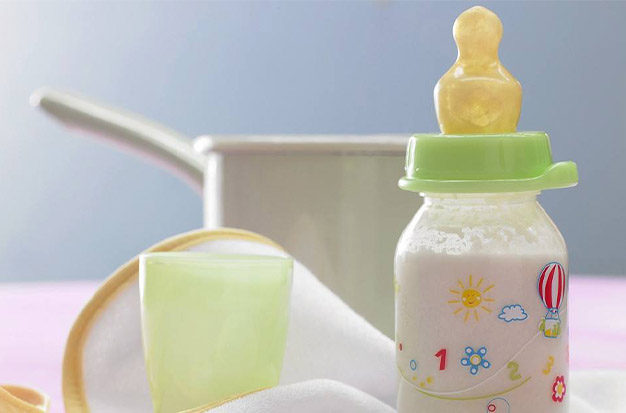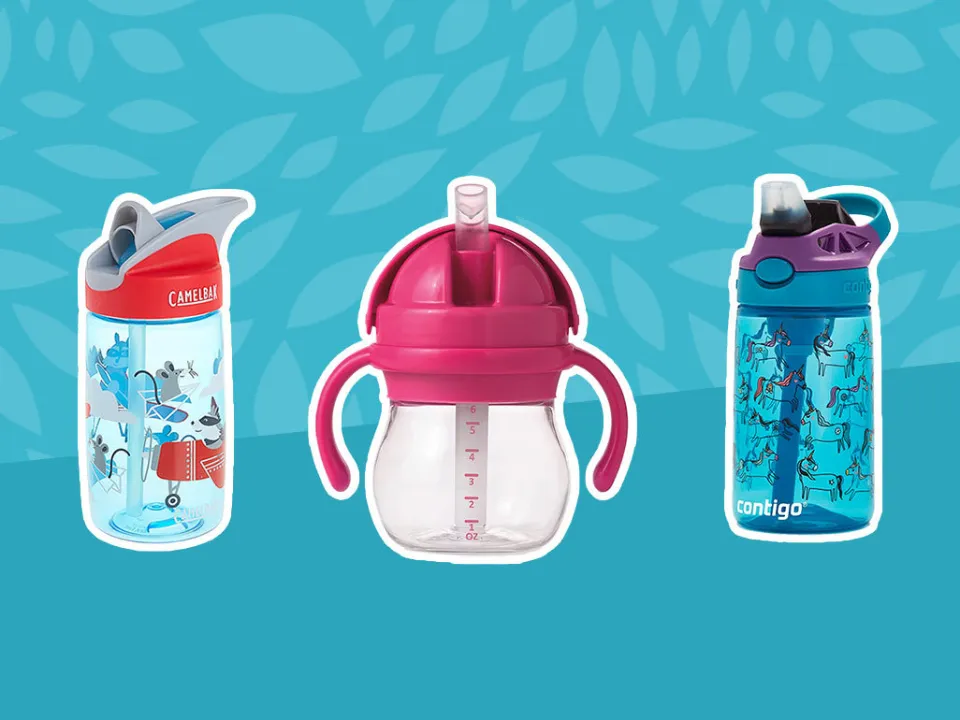Are you a new mother who has never used a bottle? Do you have any questions about how frequently you should change the feeding bottles and teats for your baby? It can be challenging and worrying to replace your baby’s feeding bottles and teats due to hygienic concerns. In this article, we’ll offer tips on how to maintain your glass baby bottles and teats, including what to look for and when to replace them.
Do Baby Bottles Expire?
No, baby bottles never go bad.
The bottles for your baby don’t have an expiration date listed on the package. Because of the hole in the middle, bottles, unlike pacifiers, are less likely to break when your baby suctions.
However, this does not imply that the bottles you give to your child will always be usable.
Baby bottles do, in fact, deteriorate over time and require replacement fairly frequently.
Do Plastic Bottles For Infants Expire?
Yes, they do; plastic is a material that degrades with use, and baby bottles are no exception. The plastics we use in daily life are of much higher quality than those used in the past thanks to the development of material research, better manufacturing techniques, and environmental concerns. Better quality doesn’t mean they won’t wear out over time; it just means they will last longer.
BPA- and EA-free bottles are the norm nowadays. Any product that is BPA and EA-free does not contain the organic compound bisphenol A in its manufacture and does not release any chemicals with estrogenic properties when put under pressure or heated. Many plastic items, including baby bottles, plastic plates and cutlery, storage containers, and drink bottles, have historically been produced using BPA. Due to the use of BPA plastics in sippy cups and bottles, studies have shown that young children and infants are most exposed to BPA. Small amounts of BPA leak out of bottles and cups when they are heated, sterilized in hot water, or washed. Niniobaby has bottles that are made of Tritan, a material that is proven to be BPA and EA-free after stringent laboratory tests.
Every four to six months, plastic bottle replacement is required. After six months, BPA-free bottles should be thrown away. It is advised to abide by the instructions on the packaging if a disposal date, such as four months, is specified as to how long they should last. The bottle should be thrown away in three months if you are unsure whether it contains BPA or is BPA-free.
What Causes Baby Bottles To Degrade?
When determining whether your baby bottles are expired, there are two key elements to consider. The bottle’s nipple and bottle.
Plastic Bottle
Plastic bottles do eventually degrade.
Sterilization and running your dishwasher may have caused this. Your plastic baby bottles should be replaced if you notice that the plastic has turned cloudy and is no longer simple to clean.
This is due to tiny scratches that cleaning has caused in the plastic. Even after washing your baby’s bottles, these microscopic scratches allow bacteria to remain.
Your bottles’ plastic will reach extremely high temperatures during washing and sterilization. The warmth generated by this may occasionally compromise the lid’s seal. Warped baby bottles allow for milk to leak and create a mess in your home, but they can also make it simple for extra air to enter your baby’s bottle and cause gas.
Glass Bottle
Because glass is more difficult to break down and harbor bacteria in, glass baby bottles can last longer without problems.
Even so, they are still susceptible to damage and require replacement.
Each time you fill your glass bottles, hold them up to the light to check for nicks, chips, or cracks.
Replace the bottle with a new one if there is any damage present, then throw the old one in the recycling bin.
Bottle Nipple
Your baby’s bottle’s nipples deteriorate much more quickly than the bottle’s base does. This is due to the fact that they are made of softer material, which tugs and pulls as your baby suctions. These delicate, razor-sharp baby teeth often find this soft material to be their prey, quickly tearing through it.
Your baby bottle’s nipple becomes a choking hazard when it starts to rot.
The most common reason why baby bottle nipples are damaged is that the nipple brush is pushed through the hold and becomes too big for your baby. When the milk comes out too quickly for your baby, they may choke or fuss if this happens.

Signs Of A Nipple Should Be Tossed
Check the bottle nipples frequently (at least once every two to three months) for these wear-and-tear indicators:
- A stream of breast milk or formula is released. If liquid rushes out of the nipple, the hole is too large, and the nipple needs to be replaced. The liquid should drip steadily from the nipple.
- Discoloration may be a sign that the nipple is getting worse.
- Thinness is a warning sign of the nipple’s deterioration. Pull firmly on the bulb to test a nipple’s durability. The nipple ought to return to its initial form. If it doesn’t, discard the nipple.
- The nipple may be deteriorating if it becomes sticky or swollen.
- Broken or torn pieces of the nipple could cause choking hazards if there are any cracks, tears, or breaks in the skin.
Signs Of A Bottle Should Be Tossed
If you see any of the following, you should change your baby’s bottle:
- Your child may cut, pinch, or sustain other injuries if there are any cracks, chips, or breaks. If glass bottles are used, this is particularly risky.
- Recall discarding the liner from bottles with disposable liners after each use.
What Is The Recommended Period For Bottle Replacement?
When should baby bottles be replaced?
In order to avoid issues like bacterial growth or leaks, you should immediately replace your bottles if you notice cloudiness, cracks, warping, or color changes.
Every four to six months, bottles should generally be replaced. If your baby is ready to move up a nipple size, it’s time to evaluate this when it comes time to replace the bottles.
Even if they do not show any visible signs of damage, the nipples of your baby bottles should be changed every one to two months. Inadvertent wear and tear that could pose a choking hazard are avoided in this way.
You should always err on the side of caution when it comes to your baby’s safety.
Things To Consider When Replacing Baby Bottles And Nipples
The rules listed above can be used as general guidelines for replacing baby bottles and nipples because there are no set rules for these things. It is best to replace them if in doubt. Babies are very delicate during the feeding process, and something as simple as a thin nipple or a scratched bottle can make it unpleasant for them.
It’s a good idea to keep in mind that the chosen bottle is BPA and EA-free while searching for a replacement or new item. In numerous studies, associations between EA and cancer, thyroid dysfunction, reproductive problems, and attention deficits have been found.
Products manufactured to be BPA and EA free will say so on the label, like Niniobaby’s baby feeding bottles made from Tritan. If the information is not available on the label, these plastics may also be marked with a recycle code of 3 or 7. It is a good idea to photograph the label and any other information on the packaging because it might be useful for disposal instructions later on.
Bottle feedings are quickly outgrown by infants. The sizes of the bottles must adjust as they get older and begin to feed more frequently. Because of this, bottles come in a variety of sizes. There are also travel-sized baby feeding bottles available so that filling them repeatedly while traveling is not necessary.
Baby bottles come in a variety of shapes, and you can choose one depending on what you’ll be using it for. They typically stand tall and straight. Additionally, the neck of the bottle will be bent and angled, which may make it simpler to feed. Additionally, there are wide ones that can fit a wide, short nipple that resembles a mother’s breast.
Depending on the baby’s age and mouth size, bottle nipples also come in a variety of sizes and shapes. The one that a baby can comfortably put in his or her mouth is the best. Sizes are classified into levels, with Level 1 being for infants 0 to 3 months and Level 4 being for infants 9 months and older.
Nipples come in a variety of styles, including conventional, latex, naturally shaped, and multi-flow nipples. The appropriate one may be chosen based on use. Furthermore, there are special nipples made for a particular flow, such as those that are vented or anti-colic. Some newborns profit from milk flowing more quickly, while others prefer milk flowing more slowly.
It all comes down to how comfortable the baby is when consuming liquids from a specific bottle and nipple combination, and mothers are the experts when it comes to their own children. The best decision to make is the one that your infant seems to be most at ease with.
Conclusion
Once you begin weaning your child, it is preferable to help him or her take sips from a feeding cup or spoon instead of continuing to use the bottle. Never get into the habit of giving your baby bottles because it may be difficult to break this later. Do not force your child to drink from a bottle if they are uncomfortable doing so (which may occur due to nipple confusion). Offer from a cup, spoon, or the nurse directly instead. If you need to, try giving them the bottle occasionally to help them get used to it.



